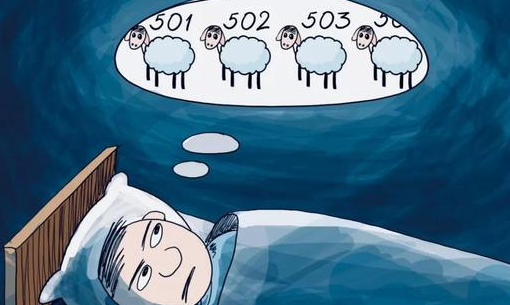
In a study published in PMC in 2015 by Hindawi Journal (by Timothy Fitzgerald and Jeffrey Vietri), it was revealed that approximately 25% of US adults have conveyed discontent regarding their sleep, of which 10 to 15% claim to experienced insomnia symptoms and 6-10% suffer from insomnia.

The study also shows that approximately 70% of patients suffering from partial stages of insomnia also end up reporting insomnia disorder within one year, and 50% of that population continues to suffer from the symptoms for the next three years.
The study suggests that insomnia has become one of the most prevalent disorders being reported in the primary care setup. Also, a high comorbidity rate has been observed between insomnia and medical or some psychiatric disorders. These statistics are a direct consequence of the increasing stress due to the current lifestyle of the urban population.
The other factors such as side effects due to certain OTC and prescription medication, arthritis, high usage of media devices before sleep, are driving the number of people suffering from insomnia, thus boosting the market growth prospects. Moreover, the growth of psychological conditions and constantly increasing noise levels in the urban areas will also propel the insomnia treatment market, during the forecast period.
Key Market Trends
Orexin Antagonist segment is expected to grow in the forecast period
The global insomnia treatment market is segmented based on treatment type, which includes benzodiazepines, nonbenzodiazepines, antidepressants, orexin antagonist, melatonin antagonist, and other treatment types. The distribution channel includes hospital pharmacies, retail pharmacies and drug stores, and online pharmacies.
The insomnia drugs comprise of a wide range of patented drugs, as well as generics. The patented drugs hold a larger share in developed regions, owing to the better reimbursement policies. The orexin antagonist segment is expected to grow rapidly during the forecast period due to its greater efficacy than other drugs.
North America is expected to dominate the Insomnia Treatment market
North America leads the insomnia treatment market. The growing need for sleep disorder treatment in the US and Canada coupled with the growing prevalence of sleep disorders is driving the market over the forecast period. Along with this, the rise in awareness and high health care spending are also expected to drive the market. Other factors that will promote the demand for insomnia drugs includes rapidly growing geriatric population and rising prevalence of sleep disorders and stress.
Competitive Landscape
The insomnia treatment market is fragmented in nature owing to the presence of multiple generic manufacturers. A few players operating in the market offer branded drugs options, however, price sensitivity is an issue in several emerging regions. Additionally, major manufacturers are focusing on the development of new molecules to gain a competitive edge and tap the high unmet needs in the market.
The major players in the market are Merck & Co., Mylan N.V., Paratek Pharmaceuticals, Inc., Pfizer Inc., Sanofi S.A., Sumitomo Dainippon Pharma Co., Ltd., Takeda Pharmaceutical Company Ltd., Teva Pharmaceutical Industries Ltd., and Vanda Pharmaceuticals Inc.
Key Topics Covered
1 INTRODUCTION
1.1 Study Deliverables
1.2 Study Assumptions
1.3 Scope of the Study
2 RESEARCH METHODOLOGY
3 EXECUTIVE SUMMARY
4 MARKET DYNAMICS
4.1 Market Overview
4.2 Market Drivers
4.2.1 Constantly Increasing Noise Levels in the Urban Areas
4.2.2 Increasing Stress Due to Highly Active Lifestyle of Individuals
4.2.3 Side Effects Due to Certain OTC and Prescription Medication
4.2.4 Arthritis, and Back pain Hindering Sleep
4.2.5 High Usage of Media Devices before Sleep
4.3 Market Restraints
4.3.1 Misconceptions about the Seriousness of Insomnia
4.3.2 Patient Non-Adherence due to Characteristic Side Effects of Insomnia Drugs
4.4 Porter's Five Force Analysis
5 MARKET SEGMENTATION
5.1 By Treatment Type
5.1.1 Benzodiazepines
5.1.2 Nonbenzodiazepines
5.1.3 Antidepressants
5.1.4 Orexin Antagonist
5.1.5 Melatonin Antagonist
5.1.6 Other Treatment
5.2 By Distribution Channel
5.2.1 Hospital Pharmacies
5.2.2 Retail Pharmacies and Drug Stores
5.2.3 Online Pharmacies
5.3 Geography
5.3.1 North America
5.3.1.1 US
5.3.1.2 Canada
5.3.1.3 Mexico
5.3.2 Europe
5.3.2.1 Germany
5.3.2.2 UK
5.3.2.3 France
5.3.2.4 Italy
5.3.2.5 Spain
5.3.2.6 Rest of Europe
5.3.3 Asia Pacific
5.3.3.1 China
5.3.3.2 Japan
5.3.3.3 India
5.3.3.4 Australia
5.3.3.5 South Korea
5.3.3.6 Rest of Asia-Pacific
5.3.4 Middle East and Africa
5.3.4.1 GCC
5.3.4.2 South Africa
5.3.4.3 Rest of Middle East and Africa
5.3.5 South America
5.3.5.1 Brazil
5.3.5.2 Argentina
5.3.5.3 Rest of South America
6 COMPETITIVE LANDSCAPE
6.1 Company Profiles
6.1.1 Merck & Co.
6.1.2 Mylan N.V.
6.1.3 Paratek Pharmaceuticals, Inc.
6.1.4 Pfizer Inc.
6.1.5 Sanofi S.A.
6.1.6 Sumitomo Dainippon Pharma Co. Ltd.
6.1.7 Takeda Pharmaceutical Company Ltd.
6.1.8 Teva Pharmaceutical Industries Ltd.
6.1.9 Vanda Pharmaceuticals Inc.
7 MARKET OPPORTUNITIES AND FUTURE TRENDS